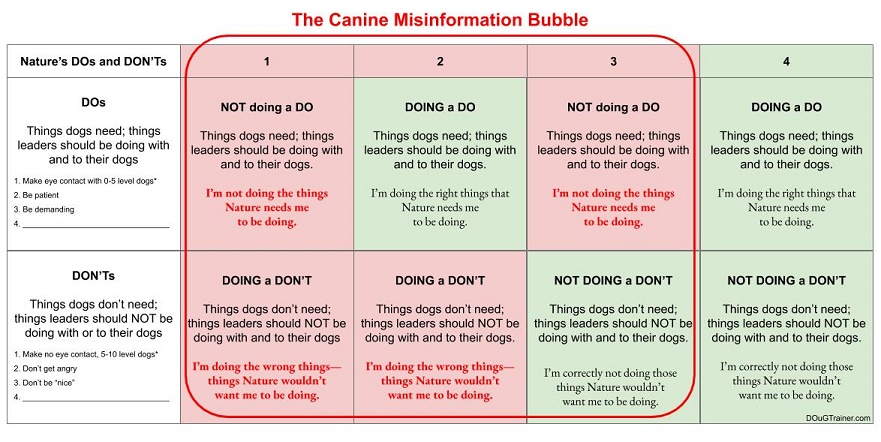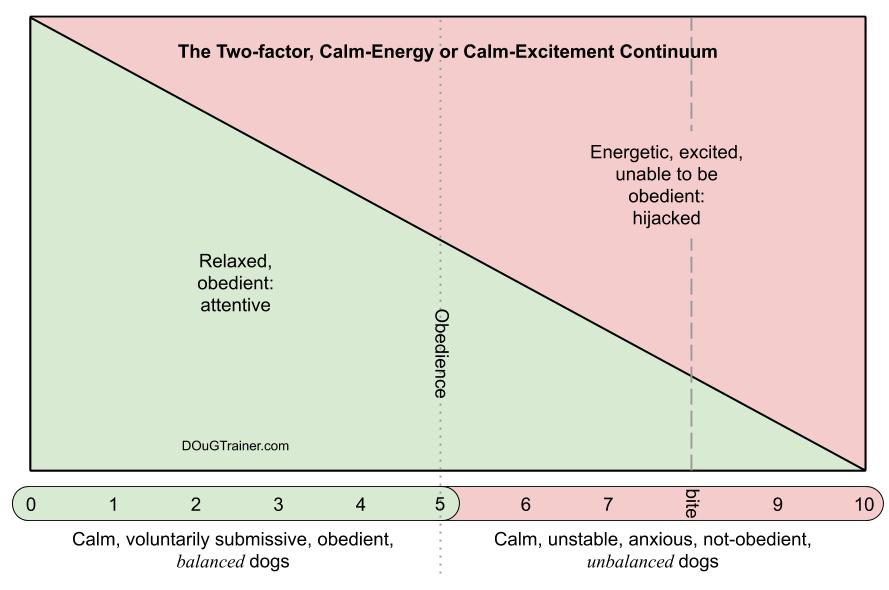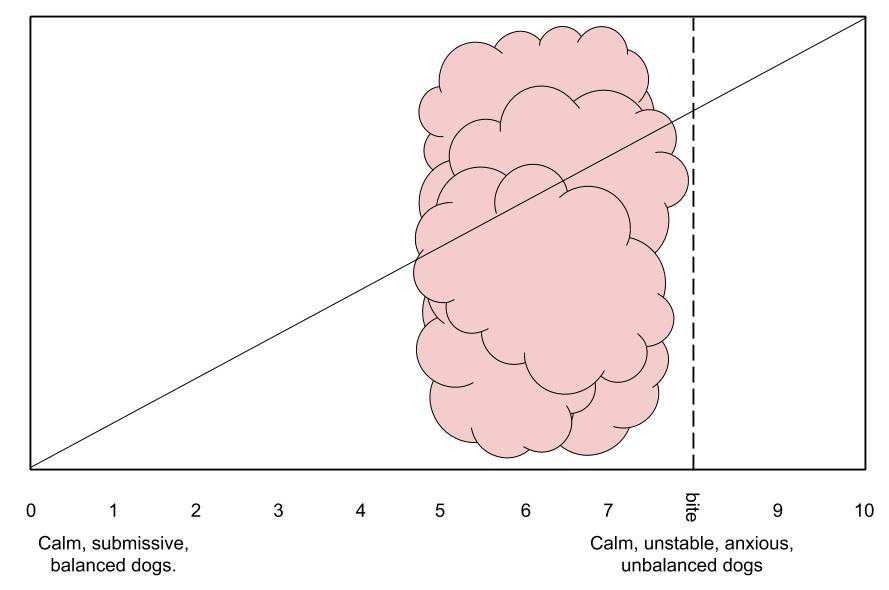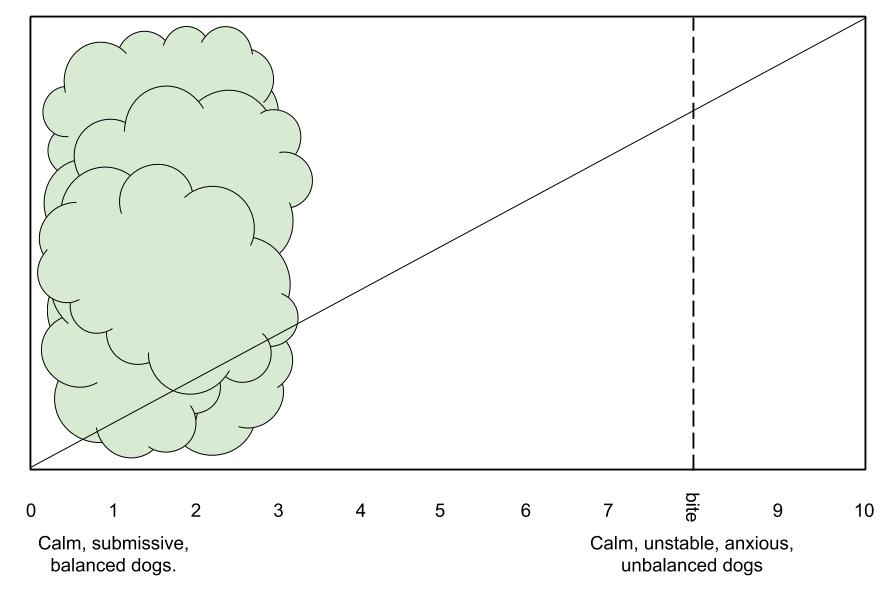Working with Nature—Assumptions on Nature’s Basics
Here are some common sense assumptions related to Nature that anyone can make. Then, once having made those assumptions, they then have to fit into the training that’s being done. Here are some of those assumptions of Nature and tenets of Reflective Dog Leadership:
Low Energy Dogs Have Fewer Problems
Low energy dogs don’t have as many prolems as high energy dogs; high energy dogs DO have lots of problems. High energy dogs are out-of-control. Dogs with low energy are better than having dogs with high energy. As often as possible, always keep your dog’s energy low.
Praise Will Raise a Dog’s Energy Level
Praise will raise a dog’s energy level—don’t praise a dog to reward it, to tell it it’s done the right thing, or to tell it that it’s done a good job.
Submit Your Dog, Don’t Praise Them
Don’t praise your dog, submit your dog. Submitting a dog is the better thing to do.
Animals Watch Each Others’ Eyes
In nature, all animals watch each other’s eyes; your dog should be watching yours. If it’s not watching your eyes, that’s an issue, and that’s going to cause problems.
Eye contact calms hypothetical packs in the wild.
There is no clinical proof for this, but it makes sense, once the overall structure is both fully and well understood. Groups of dogs are relaxed and submissive on their own, so something must be contributing to that creation of the relaxation and submission.
Nature requires dogs to have eye contact with its leaders
This is a viral-prone but discussion worthy and as well as being an arguable point, but dogs get triggered to be voluntarily submissive to their leaders by making sustained, engaged eye contact with their leaders as well as with each other. This is a point that is dismissed by most traditional trainers and dismissed by most traditional home training approaches.
Dogs are nose-centric: they should have cold, wet noses
Dogs are nose-centric. Nature programmed them to know how to respond to scents in their environment.
Take away one sense input, substitute a second: noses out, ears in
Wild animals cannot be without accurate input. Losing their nose as a sense input, Nature compensates by promoting their ears into a primary role, but they’re not programmed to know how to respond to sounds: they’re programmed to know how to respond to scent, since at their core they‘re nose-centric, not ear-centric.
When a dog’s nose is warm and dry, it indicates its nasal passages are dry, and its nose has stopped working. The ears become a primary input. Its ears are at its forefront, a slippery slope has been reached, and things keep getting worse and worse.
Hypersensitivity to sounds is one of the worst indicators to see in a dog.
Watery eyes, runny nose, moistened nasal passages, the nose starts working again
It takes lots and lots of patience, but the oxymoron is that it is possible to trigger any dog’s voluntary submission, to get the dog to get its cold, wet nose back, and to reestablish and to get its nose back into working order.





